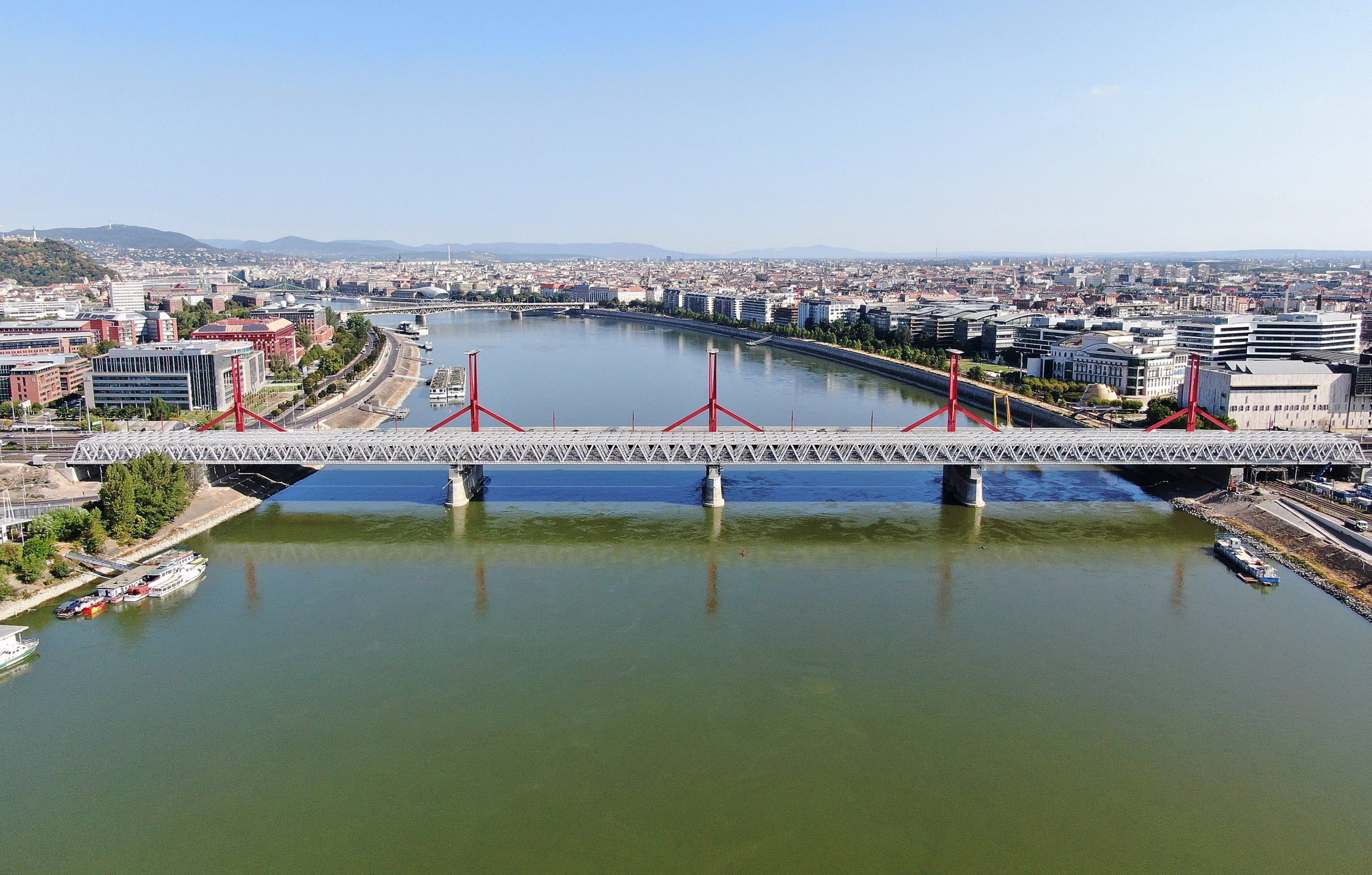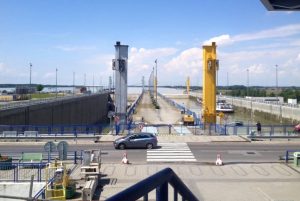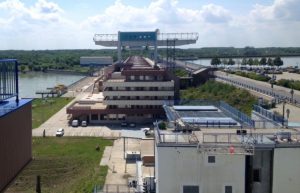
The renewed bridge plays a significant role not only in passenger rail traffic but also in international freight traffic, as three of Europe's most important trans-European rail corridors pass through it.Continue reading

Communist comrades of Czechoslovakia and Hungary shook hands over the agreement to build a hydro-electric dam on the Danube river as far back as in 1977. Ever since, the project has been marred by dispute, lawsuits, environmental destruction and corruption.
The project reached a milestone in 1992, when the dam was inaugurated on the now Slovakian part of Gabcíkovo (Bős), and started producing much needed electricity for the cash-strapped post-communist country. Instead of economic benefits, however, the project has been a source of a political and environmental sticking point between the two countries for decades.

Gabcíkovo Locks, Photo: Facebook
After environmental assessments, the Hungarian side stepped away from the joint project for good. The building of the dam meant rerouting the majority of the rivers’ flow to the Slovakian part, and also the drying up of underground water reservoirs essential for agriculture. Moreover, what gave the construction of the dam an extra sensitive dimension was the fact that even on the Slovakian side, the villages near the Danube were inhabited mostly by members of the Hungarian minority.

Gabcíkovo Locks, Photo: Facebook
Forests and planes were flooded, yet many of the affected settlements have never been compensated, or were only given inadequate amounts for their losses. In 1992, Czechoslovakia and Hungary went to the International Court of Justice in The Hague to settle their disputes. Hungary had tried to back out of the 1977 treaty, while Czechoslovakia wanted to continue with it.
The court eventually ruled in favor of Slovakia in 1997 (which had gained independence in 1993), and Hungary was forced to accept both the environmental consequences, the re-routing of the majority of the river-flow to their neighbors, and the damage caused to the way of life of Hungarian communities on both sides of the river.

Gabcíkovo hydro-electric plant, Photo: Facebook
It was no clear sailing for Slovakia either. The cost of the construction went well over budget, maintenance costs were higher than expected, and the electricity generated was less than it would have been, with the Hungarian section originally envisaged standing.
In the end, they were left with a hydro-power plant producing some eight percent of the country’s electricity, but one in the hands of a private company, in which the Italian energy firm Enel had a controlling stake. The Slovak government had tried and finally succeeded in taking back control of the running of the electric plant from the Italians, however, but not after further laws-suits, allegations of corruption, and scandals.
A minister from Robert Fico’s social democratic government, Peter Ziga, was accused of paying bribes to the Slovak judge who eventually ruled in favor of the Slovak state. The Italians have taken the Slovak state to an international court of arbitration in Vienna, and the sums demanded as a compensation were as high as 700 million euros. But luck, and the law it seems, was on the side of little Slovakia again, who won the case against Enel and Slovenské Elektrárne.
Cause for celebration in Bratislava, one would think. In fact, immediately after the ruling, another scandal followed as it emerged that the law firm of Radomír Bzán, successfully representing the Slovak state, was promised 64 million euros for their work. This would have been an absolute world record for a law firm at the time. In the end, minister Ziga had triumphantly announced that the royalties for the legal work were negotiated down to a “mere” 17.4 million euros.

The river Danube. Photo: Pixabay
Since then, minister Ziga has been host to the Slovak special investigations police unit (NAKA) searching his private residence for documents relating to another corruption case, villages damaged by the dam are still waiting for compensation, and the hydro-electric plant is producing its not-so-environmentally friendly energy for Slovak households. Parts of the plant are over 30 years old, hence due for replacement or modernization. Therefore, as the Danube is certain to continue to flow between Slovakia and Hungary, so is the Gabcíkovo hydro-electric plant guaranteed to ruffle feathers further in the future.
Featured Image: Danube, Pixabay